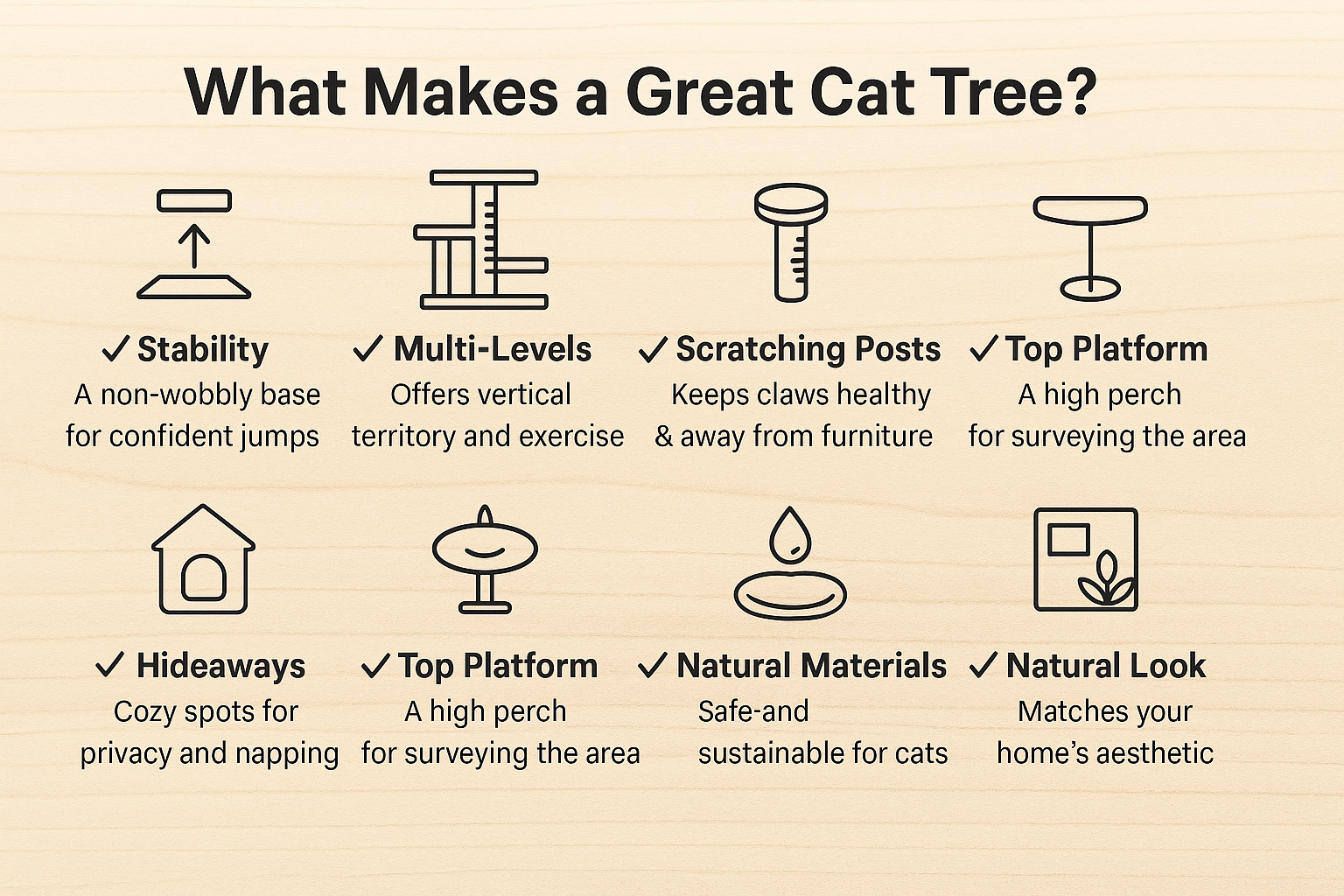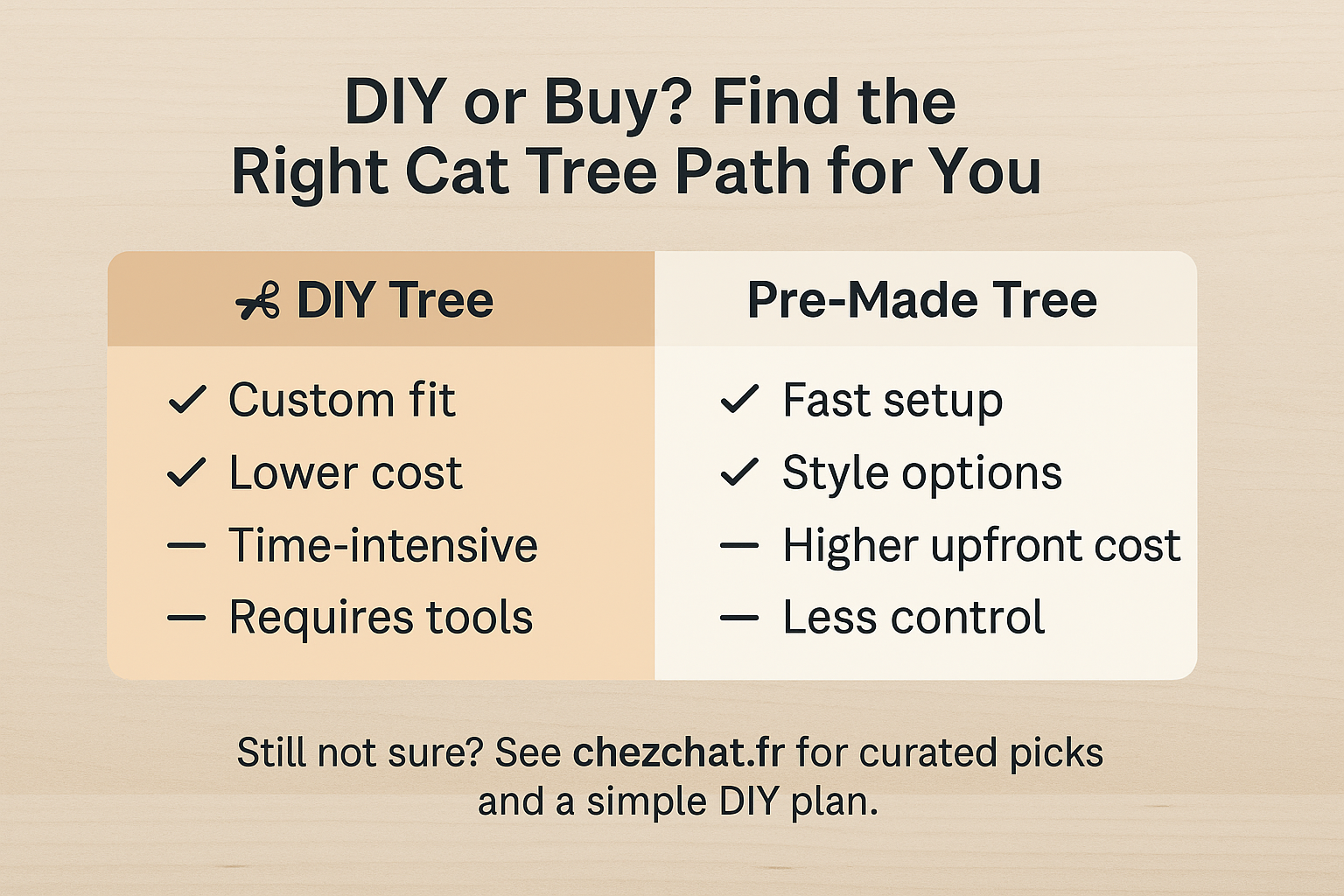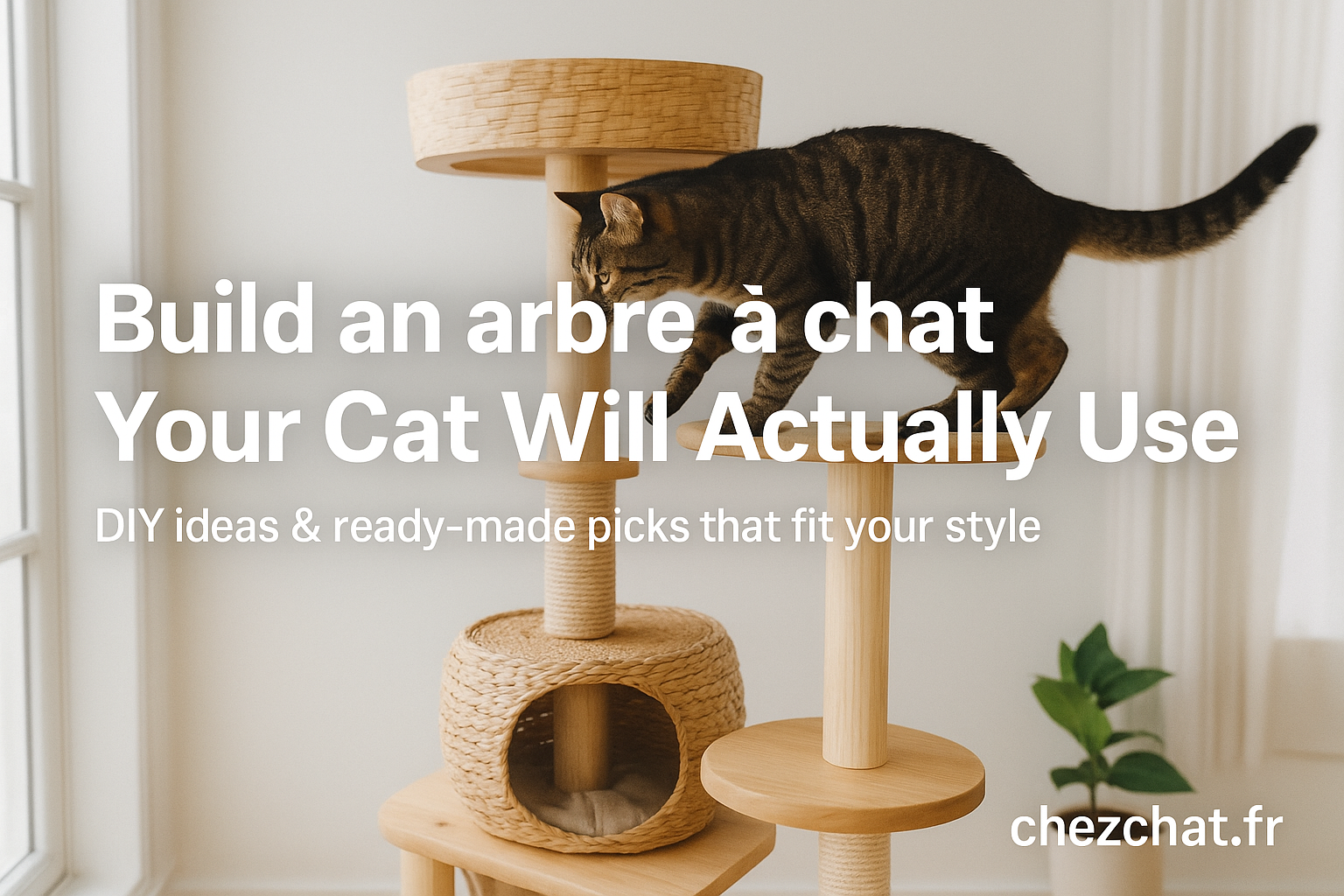Let’s face it—many cat trees on the market are either clunky eyesores or too flimsy to withstand your feline’s daily acrobatics. The result? Your cat snubs it, and you end up with an expensive, unused chunk of furniture collecting dust in the corner.
If you’re determined to give your cat a place they’ll actually love—and one that doesn’t ruin your living room aesthetic—you’re in the right place. This guide will walk you through the practical and creative elements of designing or choosing an arbre à chat (cat tree) that fits your pet’s needs and your home’s style. Whether you’re DIY-curious or just looking to make a smarter purchase, this post is for you.
Why Cat Tree Design Deserves More Thought
Most pet owners treat cat trees as purely functional items: something to scratch, climb, and maybe nap on. But the reality is, cats are more complex—and so are our homes.
For cats, a tree isn’t just a toy. It’s their lookout tower, hiding spot, nap den, and workout machine all rolled into one. For humans, it’s a permanent piece of furniture that can affect how a room feels and functions.
That’s why choosing or creating the right arbre à chat is so important. A thoughtfully designed tree bridges your cat’s instincts with your home’s style—and when done right, it enhances both feline well-being and human satisfaction.
Want to go the DIY route? This simple guide shows you how to build an arbre à chat using just basic materials and a weekend afternoon—no advanced carpentry required.
What Goes Wrong: Common Cat Tree Mistakes
Before you build or buy, learn from others’ mistakes. Here are the most common arbre à chat fails:
Structural Flaws
- Wobbly base: Makes cats feel unsafe.
- Weak platforms: Especially risky for larger breeds.
- Cheap materials: Particle board breaks down quickly.
Misreading Cat Behavior
- Too few levels: Cats love vertical territory.
- No hiding spots: Some cats need enclosed spaces to relax.
- Uncomfortable textures: Carpeted-only trees trap odors and heat.
Aesthetic Mismatch
- Bulky design: Disrupts minimalist or modern interiors.
- Loud colors: Visually jarring and hard to blend in.
Avoiding these missteps saves money—and prevents feline disappointment.
The Anatomy of a Great Cat Tree
What separates a great cat tree from a forgettable one? Here’s what to look for:
| Feature | Why It Matters |
|---|---|
| Solid Base | Prevents wobble; cats need stability to feel safe. |
| Multi-Level Platforms | Encourages movement and vertical exploration. |
| Scratchable Posts | Sisal rope or wood preferred over slick plastic. |
| Hideaway Zones | Offers comfort for shy or senior cats. |
| Window-Facing Perch | Provides a satisfying view—cats love observing from above. |
| Natural Materials | Wood and MDF age better and smell cleaner. |
| Neutral Colors | Easier to match with modern home décor. |
| Easy-to-Clean Parts | Keeps the space hygienic for cats and humans. |

Prefer a Ready-Made Solution? Explore ChezChat.fr
Not into DIY builds? Many cat owners find their perfect arbre à chat by choosing from trusted, design-forward collections. Click here to browse ChezChat.fr—France’s go-to destination for elegant, cat-approved furniture that blends seamlessly with modern interiors.
Some reader-favorite models include:
- Whisker Garden – Solid wood & sisal, perfect for jumpers
- Sweet Home – Cozy sleep nooks, minimalist frame
- Tiger Tower – Durable rubberwood, great for big cats
- Purr Shelter – Compact yet balanced for small spaces
- Mustached Wonder – Tall, sleek, and loved by design fans
Matching Trees to Cats and Homes
Cats aren’t one-size-fits-all—and neither are apartments. Match your space and cat’s temperament for a better outcome:
| Home Type | Cat Personality | Recommended Tree |
|---|---|---|
| Small Apartment | Quiet, low-energy | Compact base with hideouts. |
| Loft or Duplex | Athletic | Tall tower with ledges and ramps. |
| Family Home | Multi-cat household | Multiple perches, wide base, multiple access points. |
| Urban Flat | Friendly and social | Perch near social areas or window seats. |
| Designer Space | Any | Sleek wood design with neutral finishes. |
DIY Tree: Tools, Materials & Planning Tips

DIYing a tree is easier than it sounds—and fully customizable.
Materials
- MDF or plywood sheets
- Sisal rope or textured fabric
- Foam or washable pads
- Screws, brackets, L-joints
Tools
- Power drill
- Saw (manual or electric)
- Staple gun or strong wood glue
- Measuring tape
Design Tips
- Go vertical to conserve space
- Include step-up platforms for older cats
- Keep zones distinct: jumping vs. napping
- Choose color tones that blend with your flooring or furniture
Build or Buy? A Quick Comparison
| Criteria | DIY | Buy |
|---|---|---|
| Cost | Lower if you own tools | Can range widely |
| Customization | Full creative control | Limited to available styles |
| Time Required | 4–6 hours for most builds | Delivered and ready to go |
| Visual Match | Tailored to your space | Depends on vendor design |
| Durability | High (if well made) | Varies by brand |
Before You Decide: Watch How Your Cat Behaves
Even the best design can fail if it doesn’t match your cat’s preferences. Try this:
- Place cardboard boxes at different levels and see where they nap
- Observe whether they prefer cozy spaces or open ones
- Use treats to test interest in climbing or perching
- Move your prototype near a window or quiet corner
These small tests can save you time, effort—and make your cat a lot happier.
Sustainability & Pet Safety: Choosing Materials That Last and Protect
When picking or building an arbre à chat, many cat owners focus on design and price—but forget to check what it’s made of. Yet materials are the foundation of both durability and safety. The right ones will protect your pet, your home, and even the planet.
Here’s what to prioritize:
Go for Natural, Non-Toxic Materials
Avoid chemically treated wood, synthetic glues, or fabrics with formaldehyde. Cats lick, scratch, and sleep on their trees—so safety matters. Opt for untreated pine, solid hardwood, cotton canvas, or OEKO-TEX certified fabrics when possible.
Choose Recyclable and Repairable Components
A good cat tree doesn’t have to end up in the landfill. Look for modular designs where individual parts—like scratching posts or platforms—can be replaced without tossing the whole structure. Some brands even sell replacement parts.
Say No to Cheap Particle Board
It’s tempting to buy a tree that “looks” sturdy but is made from glued-together sawdust. These break down fast, absorb odor, and often contain adhesives unsafe for pets. Solid wood or high-grade MDF is a much better investment long-term.
Check for Off-Gassing or Strong Odors
If a new cat tree smells like chemicals out of the box, that’s a red flag. Strong off-gassing can irritate your cat’s sensitive nose—or worse, lead them to avoid it entirely.
Don’t Forget Washable Surfaces
Choose materials that can be wiped down or cleaned with mild soap. Removable cushions and machine-washable covers are a bonus, especially in multi-cat households or allergy-prone homes.
By selecting eco-conscious and pet-safe materials, you’re not only giving your cat a healthier environment—you’re also supporting better design ethics in the pet furniture industry. And that’s something worth scratching for.
Final Thoughts: Design with Purpose
An arbre à chat is more than a piece of pet gear. It’s part of your home, and part of your cat’s world.
Whether you choose to build your own or buy one ready-made, the key is fit: fit for your space, your style, and your pet’s personality.
Because your cat deserves more than a wobbly pole—and so do you.

